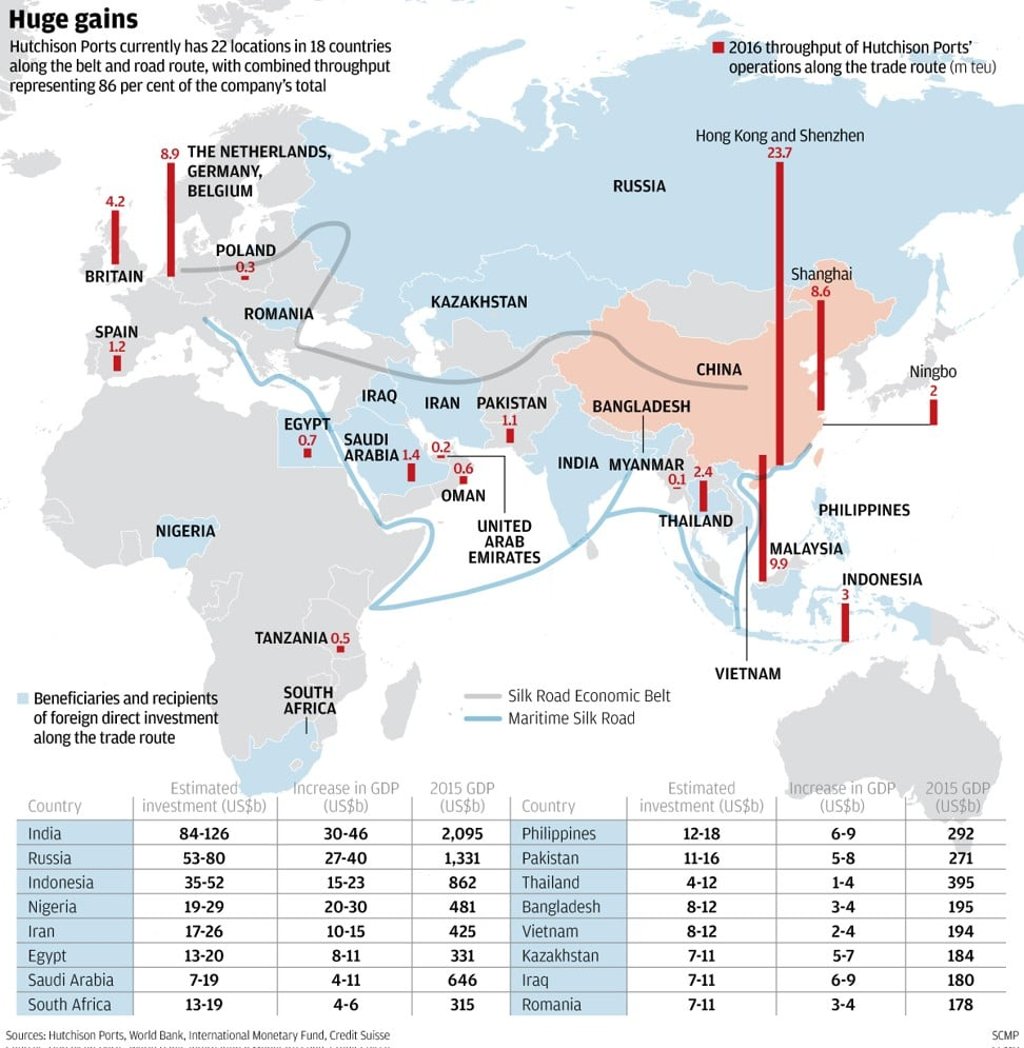New | Here’s how Li Ka-shing dominates trade along the Belt and Road Initiative
Hutchison operates ports at 22 locations in 18 countries along the Belt and Road Initiative route, with combined throughput exceeding 86 per cent of the company’s total, making Li Ka-shing one of the biggest winners in the plan.

Hutchison Ports will be operating another three ports, adding new markets to the 22 locations that the world’s largest manager of marine trade already has under its control in the area covered by China’s “Belt and Road Initiative”.
The port operator has 22 locations in 18 countries along the route, with combined throughput representing 86 per cent of the company’s total, making it one of the major Hong Kong companies benefiting from Beijing’s global trade development initiative.
“Many of the countries like Myanmar, where we started our investment 20 years ago, came long before the much-talked about Belt and Road Initiative,” said Eric lp group managing director in an exclusive interview with South China Morning Post. “We always eye developing countries as they see strong economic growth, as the markets in Europe and the US are saturating.”
“Belt and Road initiative is like a wheel…you can see that it is rolling out...running faster and faster, and the wheel could give itself impetus now,” said Ip, who expects the company’s business to grow on the back of the initiative.
